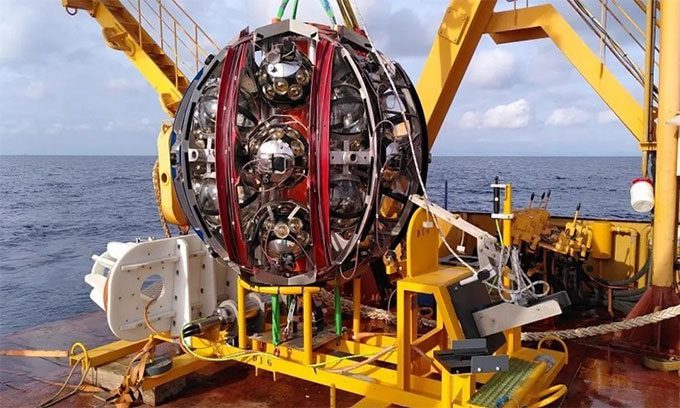KM3NeT Telescope Specializes in Searching for Ghost Particles, Filling the Volume of 400,000 Olympic Swimming Pools.
(Video: KM3NeT).
The Kilometer Cubed Neutrino Telescope (KM3NeT) is currently under construction off the coast of Sicily, Italy, as reported by Interesting Engineering on January 24. Scientists are building KM3NeT beneath the surface of the Mediterranean Sea to detect high-energy neutrinos from distant galaxies. Once completed, the facility will consist of hundreds of thousands of spherical detectors attached to cables, suspended vertically from the seabed like seaweed.
True to its name, KM3NeT will occupy a volume of one cubic kilometer, equivalent to 400,000 Olympic swimming pools. This telescope will include more than 6,000 spherical detectors, each containing 31 high-sensitivity sensors known as photomultiplier tubes. In a video shared by the project, one of the spheres is slowly lowered into the sea. Once in position, the sphere will be anchored at a depth of 3.5 km below the sea surface, specializing in capturing Cherenkov radiation bursts. This light is produced by neutrinos, also known as ghost particles, when they interact with ice or water molecules. The detectors can read these bursts of radiation, allowing scientists to determine the origin of the neutrinos as well as how they are formed.

Researchers deploying ghost particle detectors.
One reason the KM3NeT research team decided to build an underwater telescope instead of using ice is that water scatters light less. Consequently, researchers can more easily detect where neutrinos come from. However, water also absorbs light more, meaning the system operates with less light.
Neutrinos are known as “ghost particles” because they can easily pass through solid objects. Neutrinos interact very weakly with matter. A neutrino can travel a distance of one light year (10 trillion kilometers) through lead without colliding with any atoms.


















































